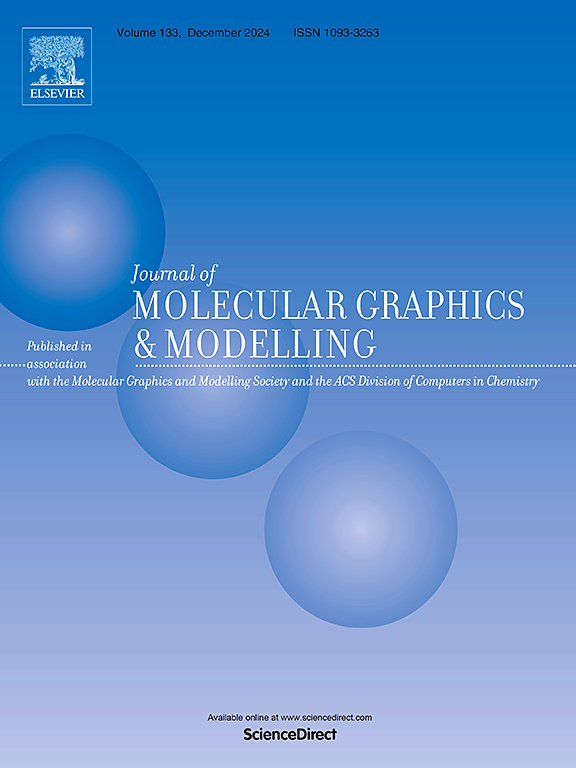Experimental and computational analysis of benzothiophene as a selective inhibitors of diabetes mellitus
IF 3
4区 生物学
Q2 BIOCHEMICAL RESEARCH METHODS
引用次数: 0
Abstract
Diabetes mellitus results in chronic hyperglycemia, affecting more than one hundred million people over the world. To treat diabetes mellitus, novel benzothiophene-derived thiadiazole analogues (1-17) were synthesized to biological assess their potential as lead inhibitors of both diabetic enzymes (α-amylase and α-glucosidase). These compounds showed quite remarkable potency against both enzymes and emerged as anti-diabetic agents. As a reference for their biological assessment, acarbose (5.90 ± 0.30 μM, 6.50 ± 1.80 μM) were used and in comparison to it analogue 3 having IC50 of 4.20 ± 0.50 μM, 4.90 ± 1.50 μM, 6 with IC50 of 3.10 ± 1.20 μM, 4.10 ± 0.80 μM, 10 with IC50 of 5.20 ± 1.20 μM, 6.10 ± 2.10 μM and 16 having IC50 of 3.90 ± 2.20 μM, 4.10 ± 1.20 μM emerged as most active analogues among the synthesized derivatives. Versatile attached functionalities such as CF3, F, OH and Cl bind with the target proteins in order to inhibit their normal activity or function. Binding potency (interactive properties) of the leading compounds was also revealed under molecular docking. ADME analysis further unveiled that the potent compounds exhibit drug properties. Moreover, reactivity of these analogues with leading potential was also explored via density functional theory (DFT), revealing their molecular electrostatic potential, electrophilic, nucleophilic, HOMO and LUMO sites.

苯并噻吩作为糖尿病选择性抑制剂的实验与计算分析
糖尿病导致慢性高血糖,全世界有超过1亿人受到影响。为了治疗糖尿病,合成了新型苯并噻吩衍生的噻二唑类似物(1-17),并对其作为糖尿病酶(α-淀粉酶和α-葡萄糖苷酶)先导抑制剂的潜力进行了生物学评估。这些化合物对这两种酶表现出相当显著的效力,并成为抗糖尿病药物。作为参考的生物评估、阿卡波糖(5.90±0.30μM, 6.50±1.80μM)使用,相比模拟3 IC50 4.20±0.50μM, 4.90±1.50μM, 6 IC50为3.10±1.20μM, 4.10±0.80μM, 10 IC50为5.20±1.20μM, 6.10±2.10μM和16的IC50 3.90±2.20μM, 4.10±1.20μM成为最活跃的类似物的合成衍生品。多种附加功能如CF3、F、OH和Cl与靶蛋白结合,以抑制其正常活性或功能。通过分子对接,揭示了先导化合物的结合效能(相互作用性质)。ADME分析进一步揭示了强效化合物具有药物特性。此外,通过密度泛函理论(DFT)研究了这些具有超前电位的类似物的反应性,揭示了它们的分子静电势、亲电性、亲核性、HOMO和LUMO位点。
本文章由计算机程序翻译,如有差异,请以英文原文为准。
求助全文
约1分钟内获得全文
求助全文
来源期刊

Journal of molecular graphics & modelling
生物-计算机:跨学科应用
CiteScore
5.50
自引率
6.90%
发文量
216
审稿时长
35 days
期刊介绍:
The Journal of Molecular Graphics and Modelling is devoted to the publication of papers on the uses of computers in theoretical investigations of molecular structure, function, interaction, and design. The scope of the journal includes all aspects of molecular modeling and computational chemistry, including, for instance, the study of molecular shape and properties, molecular simulations, protein and polymer engineering, drug design, materials design, structure-activity and structure-property relationships, database mining, and compound library design.
As a primary research journal, JMGM seeks to bring new knowledge to the attention of our readers. As such, submissions to the journal need to not only report results, but must draw conclusions and explore implications of the work presented. Authors are strongly encouraged to bear this in mind when preparing manuscripts. Routine applications of standard modelling approaches, providing only very limited new scientific insight, will not meet our criteria for publication. Reproducibility of reported calculations is an important issue. Wherever possible, we urge authors to enhance their papers with Supplementary Data, for example, in QSAR studies machine-readable versions of molecular datasets or in the development of new force-field parameters versions of the topology and force field parameter files. Routine applications of existing methods that do not lead to genuinely new insight will not be considered.
 求助内容:
求助内容: 应助结果提醒方式:
应助结果提醒方式:


